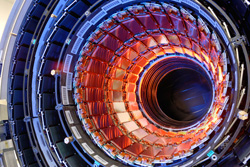Syracuse Views Summer 2025
We want to know how you experience Syracuse University. Take a photo and share it with us. We select photos from a variety of sources. Submit photos of your University experience by sending them directly to Syracuse University News at…

 Led by Sheldon Stone, a physicist in SU’s
Led by Sheldon Stone, a physicist in SU’s